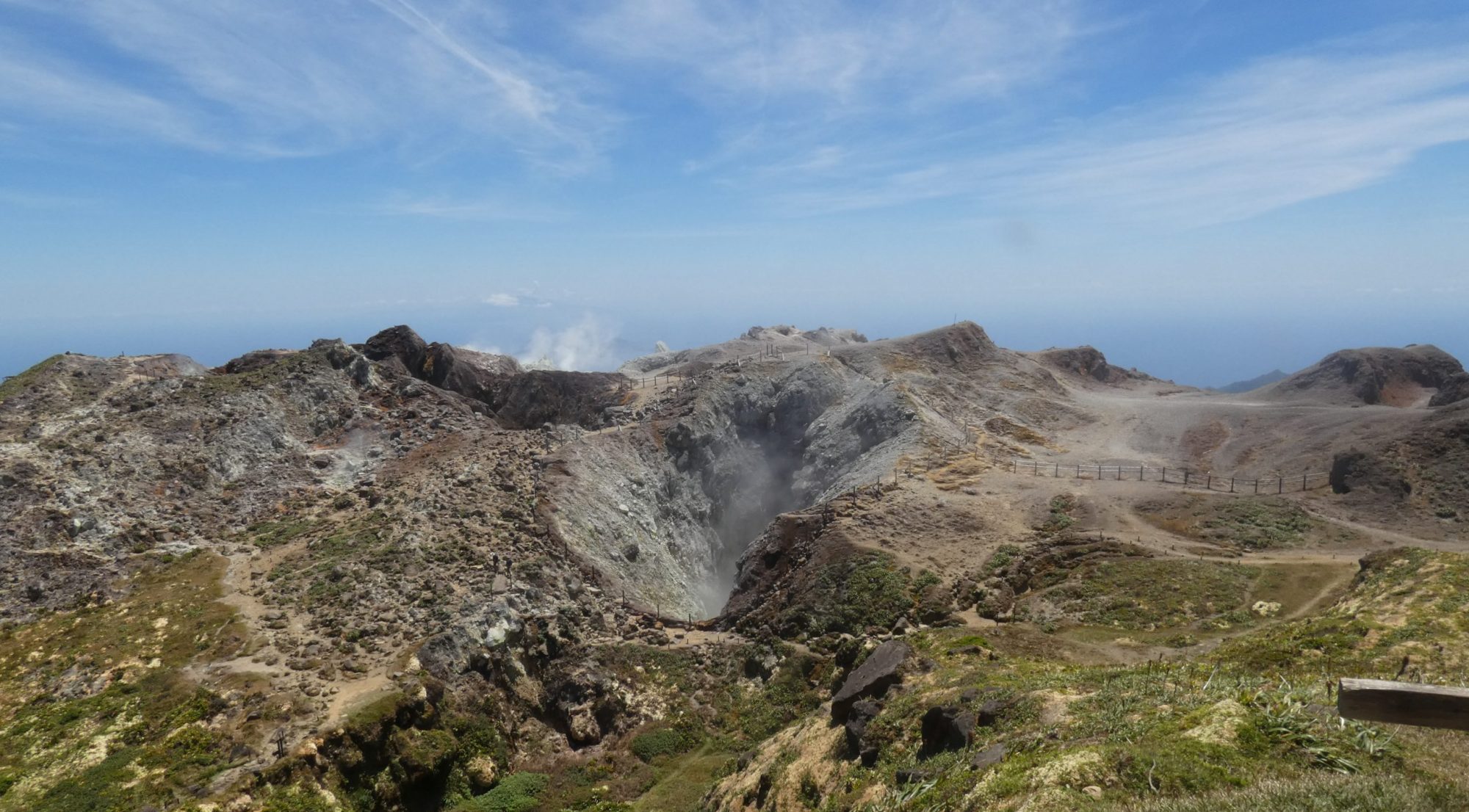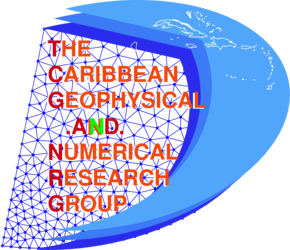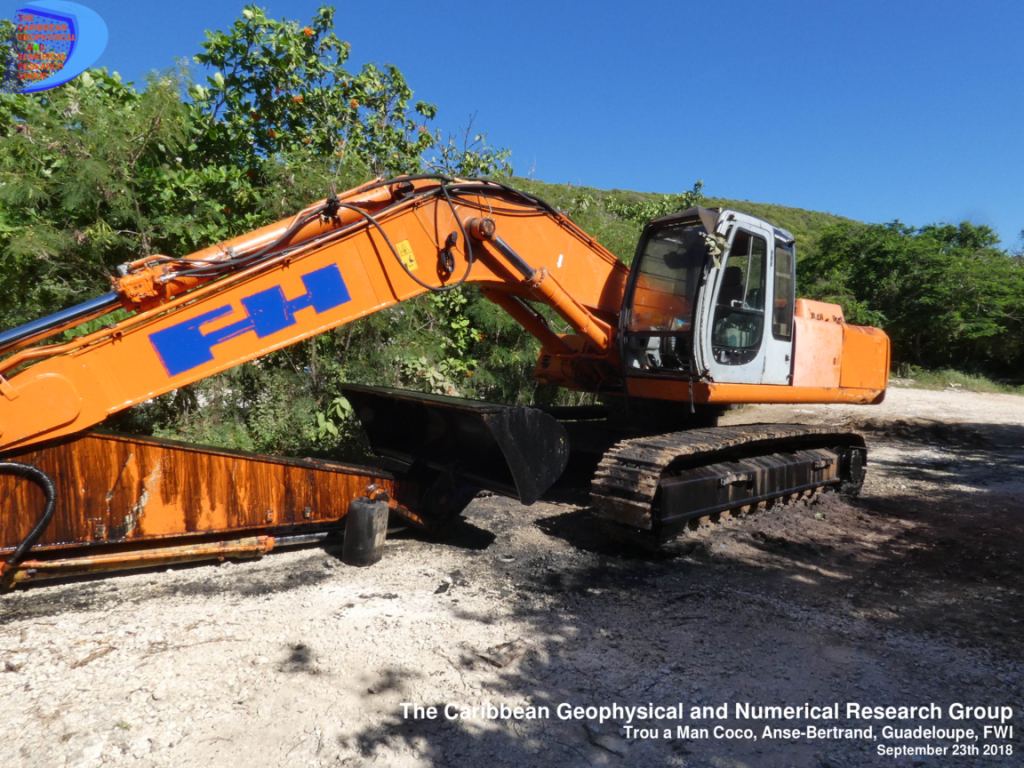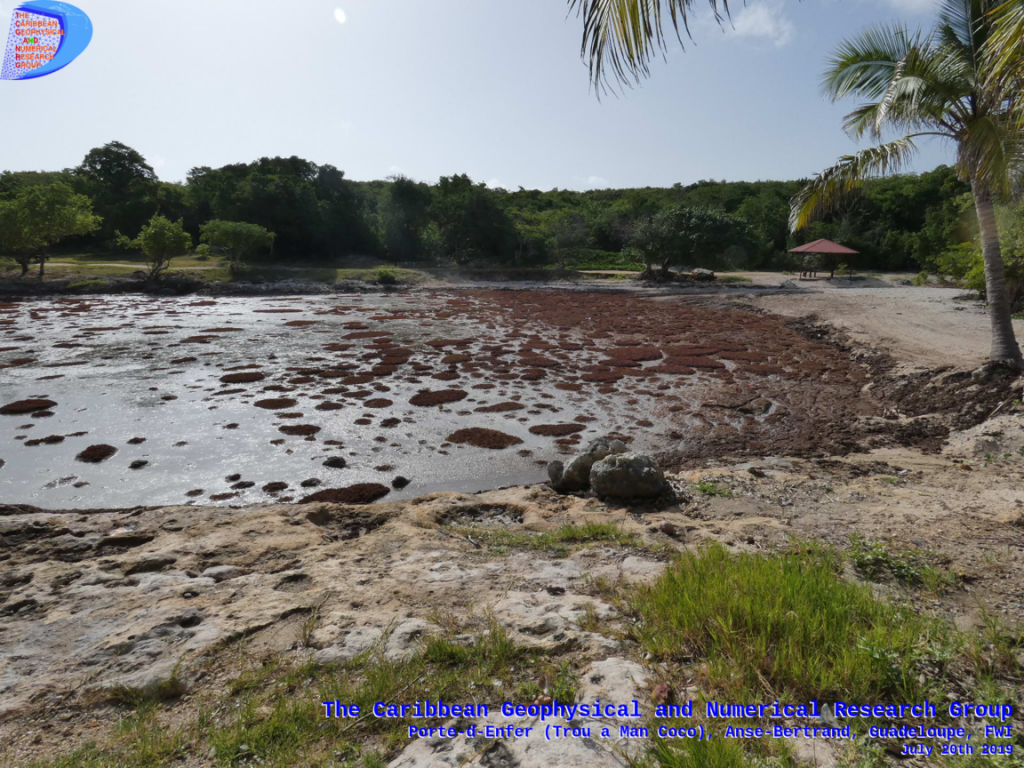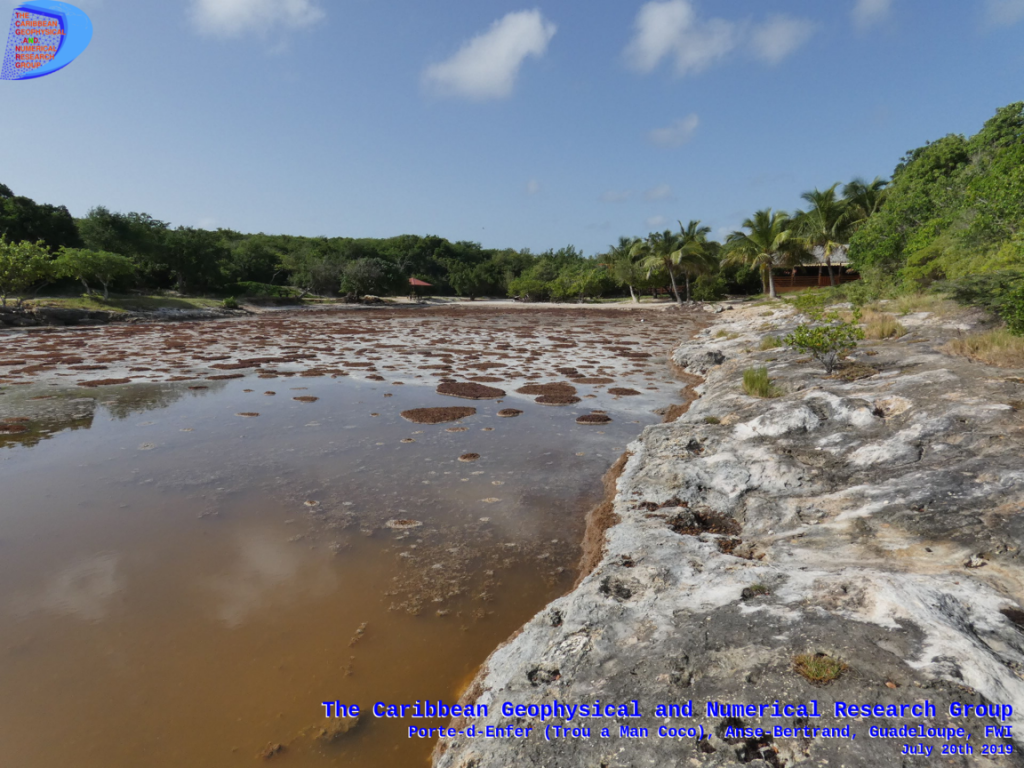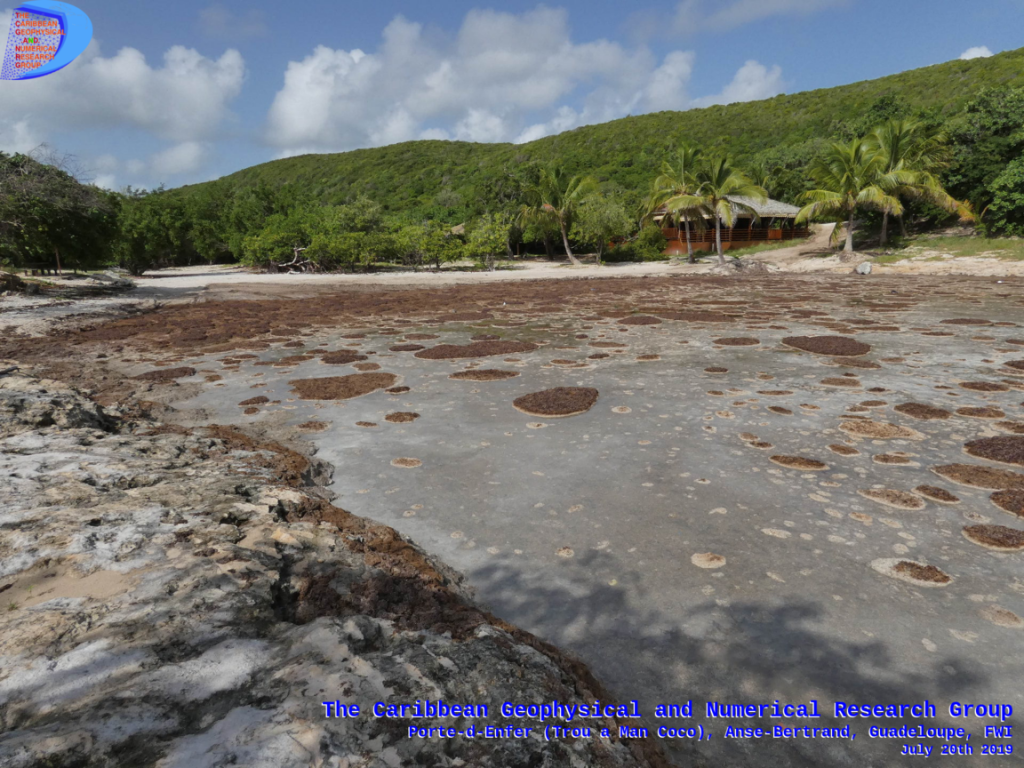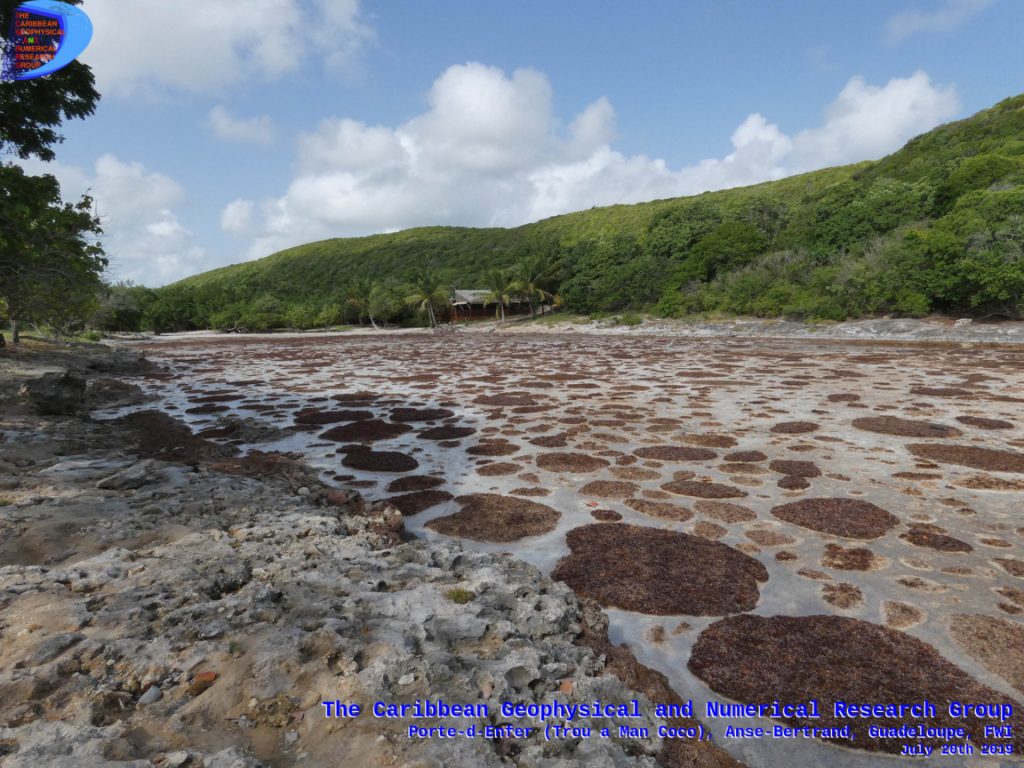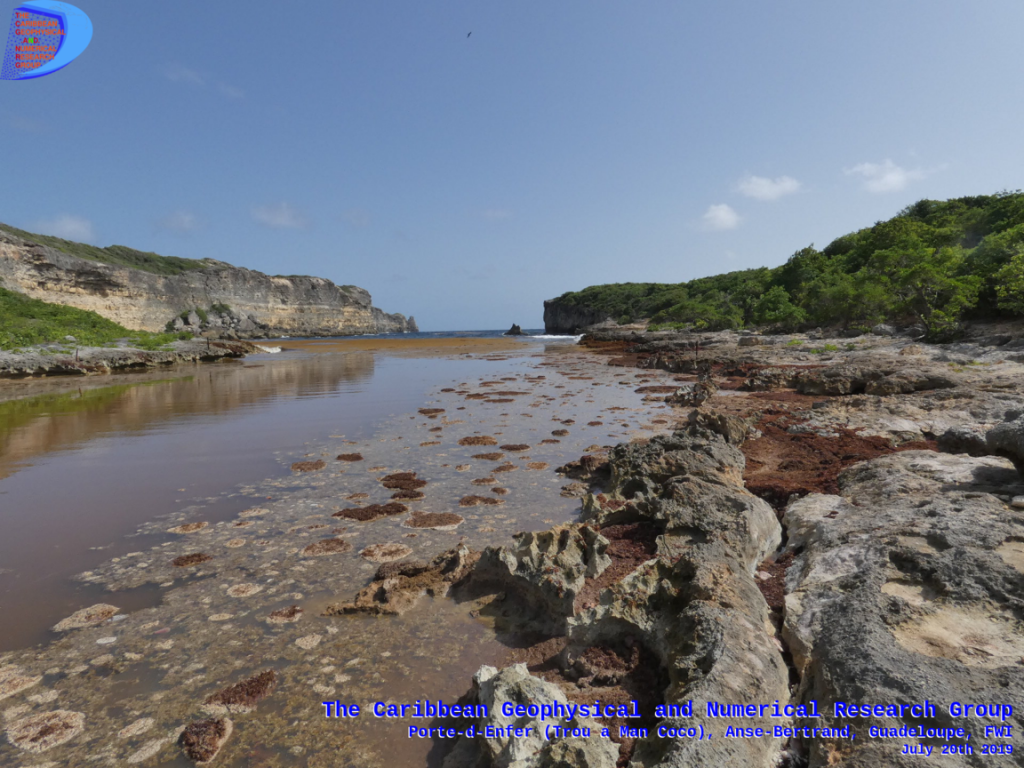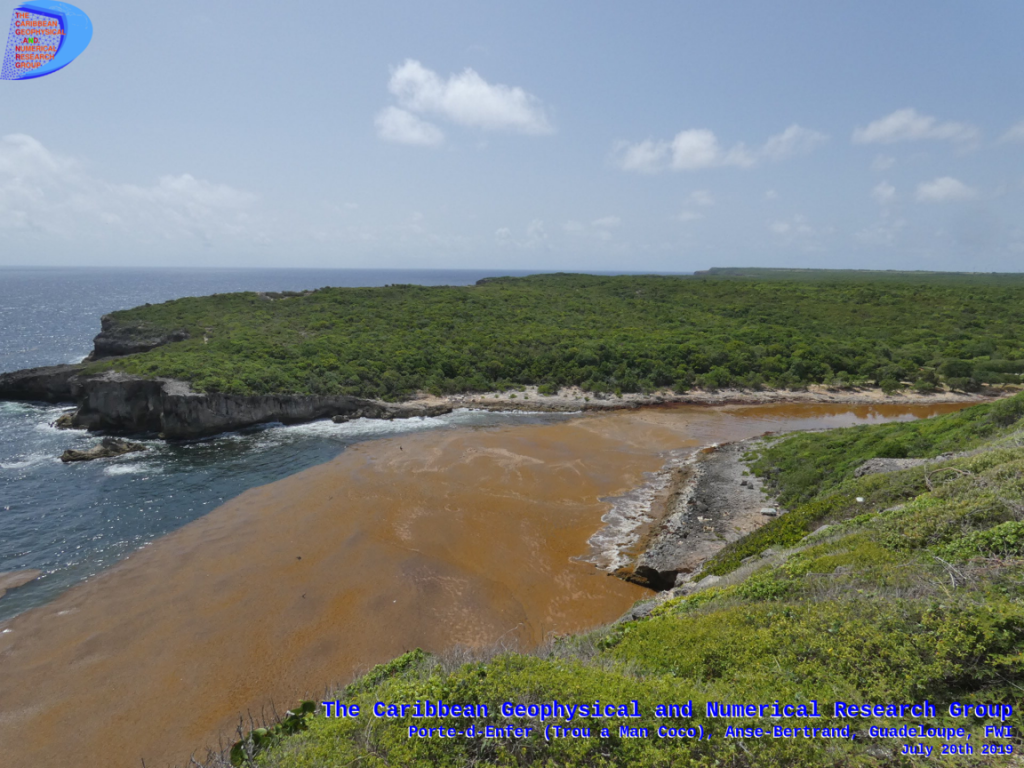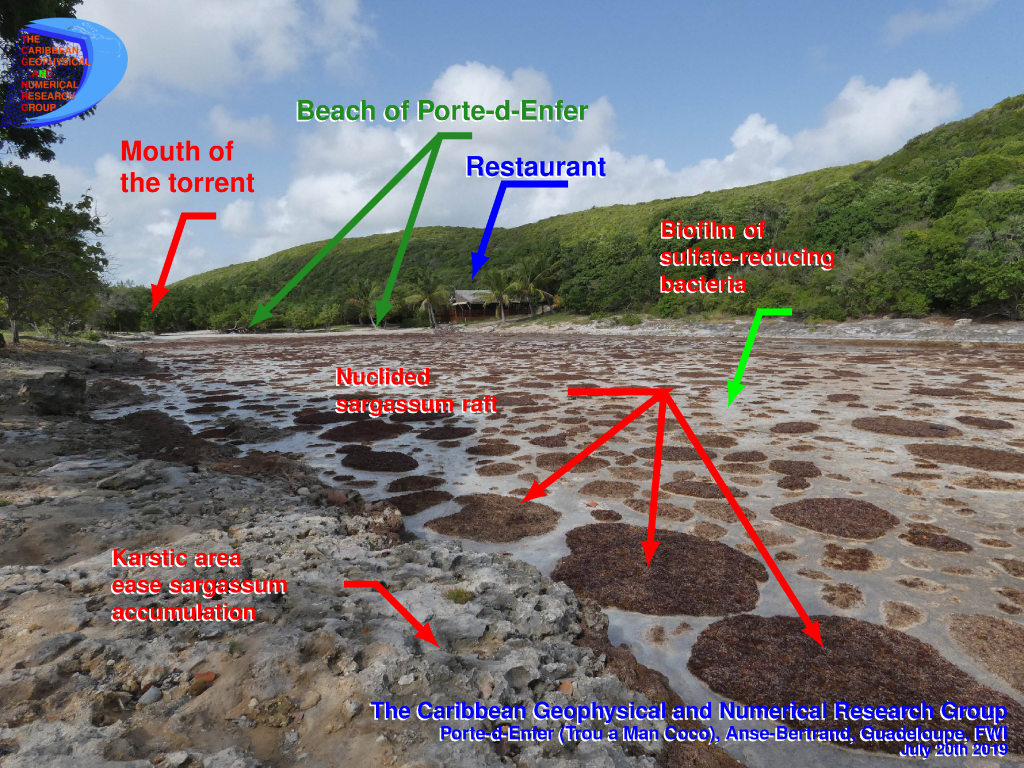Sargassum (Sargassum fluitans and natans) have been the main species of visible pelagic floating algae since 2011, stranded on the Caribbean coast. Their stranding are strongly influenced by sea currents and configuration of the coastlines (human making included). Arrival of dense or scattered rafts causes ecological disturbances because of the quantity of organic matter (composed by carbon C, hydrogen H, Oxygen O, Nitrogen N, Phosphorus P and sulphur S) which it brings and the speed of stranding. Rafts of Sargassum move under effects of wind, waves, sea currents and tide. They are home to a wide variety of plankton, fish and shellfish colonies. Sargassum oxygen needs coupled with the poor quality of shallow coastal waters cause asphyxiation and anoxic decomposition -fermentation- generating toxic gases such as hydrogen sulphide (H2S), ammonia (NH3), thiols (R -SH) but also greenhouse gases such as methane (CH4).
These processes of decomposition without oxygen are the subject of many controversies, health, economic and ecological crises. The solutions adopted in the French West Indies are mechanized pickups and emergency dredging, causing extensive destruction of beaches and harbours. The concentrations of two of the most toxic gases (H2S & NH3) are controlled so that populations can be evacuated if there is a risk. Despite measured rates of more than 10ppm H2S (Limit Value-Short-Term Exposure VLCT) no evacuation has been done since 2011.
Remarkable sites
Many beaches are considered to be remarkable sites. They attract many visitors and constitute the tourism potential of our developing countries. The presence of sargassum causes degradation of bathing water quality, landscape potential and air quality. These sites, which are highlighted and exploited by the tourism industry, offer significant profitability due to the lack of maintenance required to date.
The management of these sites is mostly complex and is pooling of many stakeholders, but this can not in any case justify their long-term pollution.
Porte-d-Enfer Beach
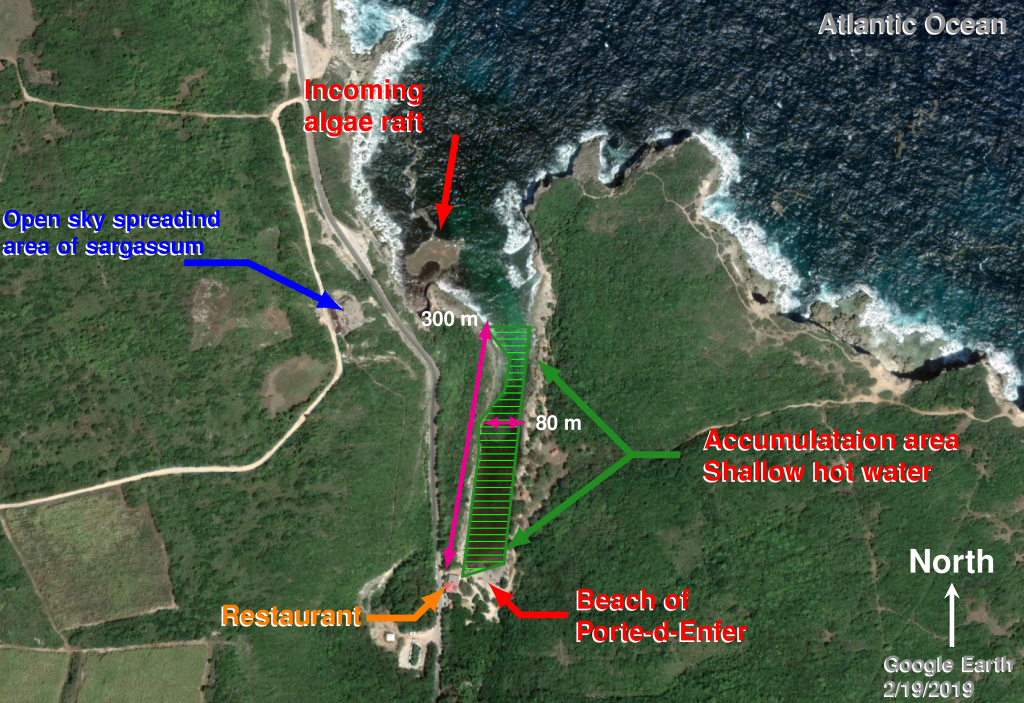
The range of Porte-d-Enfer (16.48 ° N, 61.44 ° W) in Anse-Bertrand (known as the Trou à Man Coco) has been known for the last years of numerous massive sargassum stranding massive (see photo) provoking the fact of its geographical configuration the partial or complete blockage of the creek and a thick layer (more than 15 cm in height) of decomposed compacted algae. Under favourable conditions the production of bio-gases takes place on the whole column of wet Sargassum. It can be observed by the presence of bubbles (under columns shape) or by the dispersion of biofilms of sulpho-reducing bacteria greyish colour on the surface.
In these cases of mass stranding (example September 2018, January and July 2019) swimming is impossible and dangerous for health. The presence in the zone (up to 500m) of the basin is risky because the production of biogas is important, non-homogeneous and highly variable. The temperature of the water favours the production of hydrogen sulphide (H2S) and ammonia (NH3) during the sunniest hours of the day (9am-5pm) and therefore the risk during periods of affluence. Time variations such as wind failure or pressure drops favour high concentrations.
Cleaning – mitigating the effects of stranding
The site is naturally cleaned during the phases of strong increase of swell which warranty a ebb of the organic matter and the re-oxygenation of the basin.
The rainy season lets in the mouth which encourages the ebb and feeding of the sand beach.
The mechanized methods of collection are put in place by the municipality and the services of the French State are only for small quantity stranded algae. An attempt to set up a floating dam was a failure. Collection with crawler excavator help to strongly damaged the beach and nearby roads as well as pollution from petroleum products (see image of a tractor-excavator).
Manual cleaning stay the more efficient and ecologically respectful of the site, but unfortunately it is not set up.
Protection of populations
There have been 22 surveys of H2S and NH3 since 2018 with 15-minute portable measurements. No measures have indicated overtaking of the limit values for exposure, the maximum values recorded are 1.9 ppm for H2S (24/04/2018) and 36 ppm for NH3 (28/05/2018). We can question the validity of these measures when we know that the potential area of biogas production in case of total coverage is 14,000m2 while stranding areas producing biogas is rarely greater than 5,000m2 in Guadeloupe (case of the fishing port of Capesterre-Belle-Eau). Comments made by users in the area confirm this question.
Nevertheless, these measurements are much higher than the chronic and sub-chronic exposure limits of 0.02 ppm for H2S and 0.714 ppm for NH3 [HCSP 08/06/2018]. The sub-chronic exhibition is an exhibition of one to several months which was the case between March and July 2018 according to the statements published by the ARS Guadeloupe (i.e., Regional Health Agency).
Two last values of H2S measured Thursday, July 18, 2019 and Monday, August 12th 2019 reach respectively 5.2 and 4.2 pm which are alert values (>5 ppm) for workers in French Labour Law.
No signboard is visible to alert passers-by (and tourists) of the health risks during periods of beaching and fumes of toxic gas. Without knowledge of the site, many passers-by, children and the elderly, admire the stranding without taking into account the serious health risk.
In the case of the crisis of green algae (Ulva aka sea-lettuce) of Brittany it took nearly ten years, dead wild boars, horses, dogs and several joggers before appearing on the beaches of official information boards.
It is therefore urgent to recognize that human health is worth more than the reputation (or image) of a tourist site. It is essential that the authorities protect people and tourists by intelligently informing about the non-permanent risk of stranding sargassum. This is particularly true for territories that rely on sustainable tourism development.
The Caribbean Geophysics and Numerical Research Group (TCGNRG) remains at your disposal to assist you (communities, collection companies and individuals) to secure the best places taking into account environmental conditions.
Last update (9/07/2019)
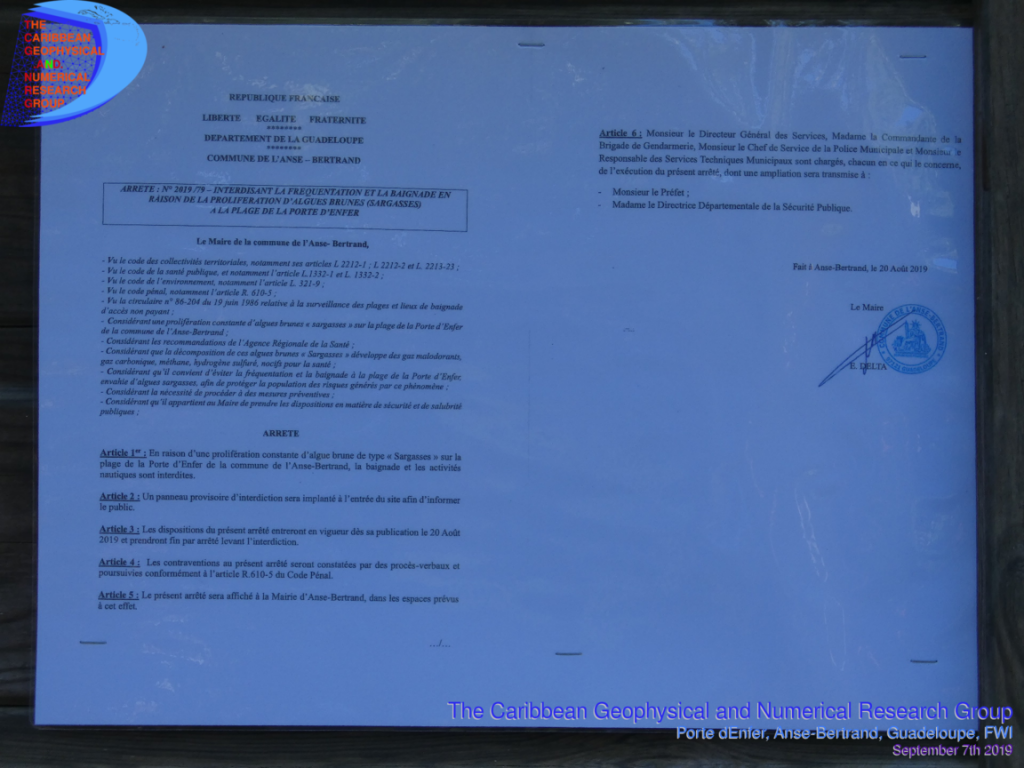
Municipal decree 8/20/2019 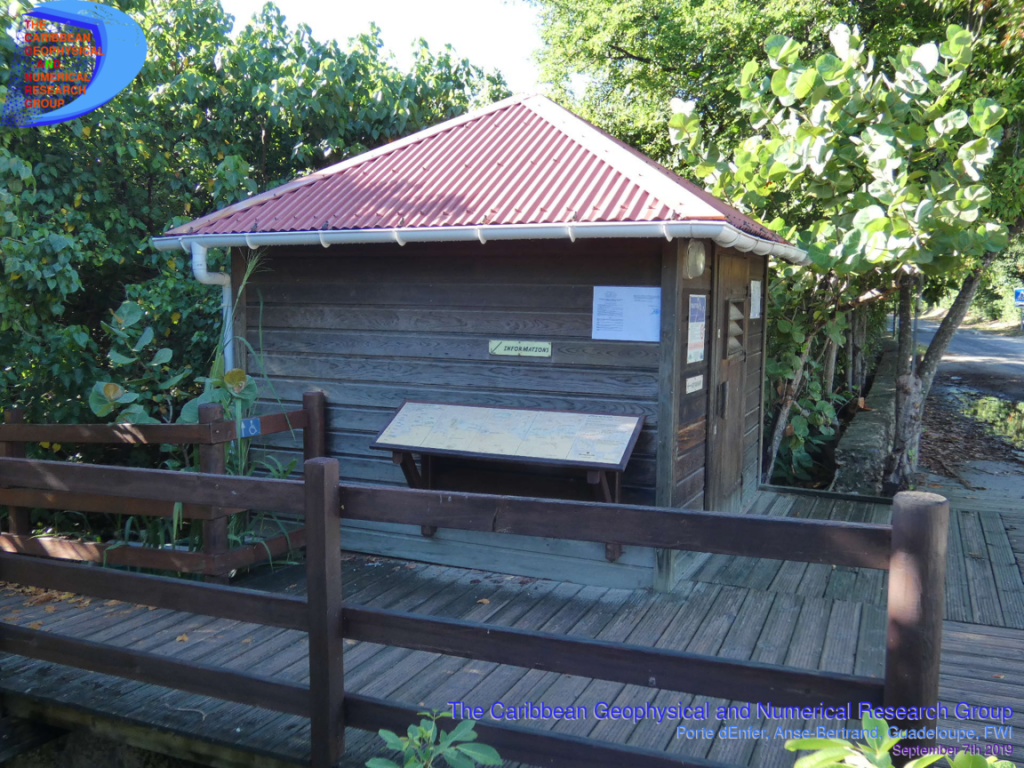
Display area of the decree
Since 20 August 2019 a municipal decree (see photo above) prohibits all nautical activities. This first plain decision of common sense is to be commended. But despite all the poor visibility of the display and the lack of pictogram for people who do not read the French prevents to really warn the risks associated with the presence of anoxic decomposing (fermentation) seaweed for more than two months.
At the moment the photos were taken an under water spear fisherman was coming out of the water without noticing the posters
